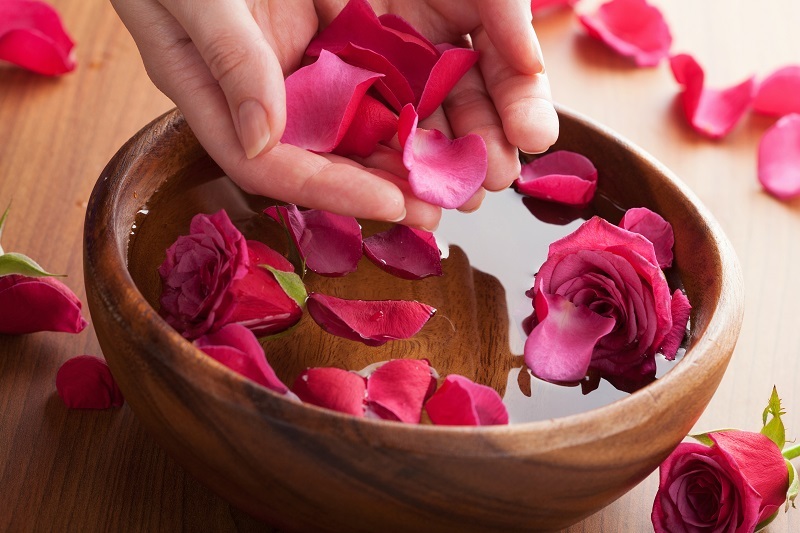Unlock the Mysteries of Orchid Maintenance
Posted on 13/06/2025
Unlock the Mysteries of Orchid Maintenance
Orchids--with their exotic beauty, intricate blooms, and diverse varieties--have captivated plant lovers for centuries. Yet, maintaining their allure is often shrouded in myth, causing frustration for many enthusiasts. If you've ever wondered how to keep your orchids healthy year-round, you're in the right place. This comprehensive guide will unravel the secrets of orchid care, providing actionable advice and expert insights to empower you as an orchid caretaker.
Introduction to Orchid Care: Understanding Your Plant
Orchids are one of the most fascinating plant families, boasting more than 25,000 species worldwide. Their unique adaptations and sensitive needs set them apart from other houseplants. To truly master orchid maintenance, you'll need to first understand the specific type of orchid you own--whether it's a Phalaenopsis, Cattleya, Dendrobium, or another variety.
- Phalaenopsis (Moth Orchids): Most common and beginner-friendly, known for their long-lasting blooms.
- Cattleya: Noted for their vibrant colors and ruffled flowers.
- Dendrobium: These durable orchids often bloom several times a year.
- Vanda: Famous for their large, showy flowers and aerial roots.
Why Do Orchids Need Special Care?
The unique structure and growing conditions of orchids make their maintenance slightly more intricate than the average houseplant. Unlike many plants, orchids rarely grow in soil; in the wild, they typically anchor to trees or rocks. This natural lifestyle influences every aspect of their care, from the medium they grow in to their watering and light requirements.

The Essentials of Orchid Maintenance
Optimal Lighting: Shedding Light on Orchid Care
Lighting is perhaps the most crucial element of successful orchid care. Most orchids thrive in indirect, bright light. Too much direct sunlight can scorch leaves, while insufficient light can inhibit flowering.
- Phalaenopsis: Enjoys east-facing windows or filtered south-facing windows.
- Cattleya and Vanda: Need more light; suitable for bright southern exposures with some shading.
- Dendrobium: Tolerates a wider range but prefers intermediate light levels.
Signs of overexposure include yellow leaves or dry tips, while leathery, dark green foliage indicates too little light. Adjust placement as needed to get the balance just right.
Watering Wonders: The Art of Orchid Hydration
Orchids require a delicate touch when it comes to watering. Understanding their watering needs is vital for maintaining healthy plants.
- Orchids dislike 'wet feet,' so avoid standing water in pots.
- Water about once a week, ensuring the potting mix dries out in between sessions.
- Water early in the day so leaves have time to dry before nightfall.
- Use room-temperature, distilled, or rainwater if possible.
Warning: Overwatering is one of the most common issues leading to root rot. Always err on the side of slightly dry rather than soggy.
Humidity: Creating a Tropical Oasis
Most orchids hail from humid tropical forests. While your home may be much drier--especially in winter--simple tricks can help raise humidity levels:
- Group your orchids together to create a moisture-rich microclimate.
- Use a humidity tray filled with pebbles and water beneath the pots (but ensure roots aren't submerged).
- Mist leaves occasionally, especially on hot days.
- Run a humidifier if you have several orchids or a dedicated plant space.
Orchids generally thrive with 40-60% humidity. Lower humidity can cause buds to drop prematurely and leaves to turn crispy, so monitor levels with a hygrometer.
The Importance of Air Circulation
While humidity is essential, stagnant air can foster disease. Orchids need gentle airflow. Crack a window, use a small fan, or ventilate your growing area to encourage healthy air movement. Good circulation dries foliage after watering and discourages mold and pests.
Perfecting the Orchid Environment
Choosing the Right Pot and Potting Mix
Unlike most houseplants, orchids don't thrive in standard soil. Instead, they require high-drainage materials that mirror the epiphytic conditions of their natural habitat.
- Potting Media: Common orchid mixes include bark chips, sphagnum moss, and coconut husk chips. Choose a mix suitable for your orchid species and local humidity.
- Pots: Use pots with multiple drainage holes. Clear pots are ideal for orchids like Phalaenopsis because they allow you to monitor root health.
Repot every one to two years--or when your orchid's medium starts to break down. Repotting not only provides fresh nutrients but also prevents compaction that can smother delicate roots.
Nutrient Needs: Fertilizing Orchids for Vibrant Blooms
Proper nutrition is critical for lush leaves and prolific blooms. Orchids are light feeders, but they do require a balanced diet:
- Use a specialized orchid fertilizer, diluted to half-strength.
- Fertilize every two to four weeks during active growth periods (spring and summer).
- Rinse the potting medium occasionally with plain water to prevent salt build-up.
- In fall and winter, reduce or pause fertilizer as growth slows.
Following this feeding schedule helps unlock vigorous growth and spectacular flowering cycles, demystifying orchid maintenance for growers at any level.
Troubleshooting Common Orchid Problems
Disease and Pest Prevention
Like all houseplants, orchids are susceptible to a range of pests and diseases. The most common issues include:
- Mealybugs, scale, and spider mites: Remove them with a cotton swab dipped in rubbing alcohol or use insecticidal soap.
- Root rot: Usually caused by overwatering. Healthy roots are firm and white-green; rotting ones are brown and mushy.
- Leaf Spots: Fungal or bacterial infections may result from poor air circulation or water sitting on leaves.
Quick Tips for Preventive Care:
- Sanitize cutting tools and pots before use.
- Quarantine new orchids before introducing them to your collection.
- Regularly inspect plants for early signs of trouble.
Encouraging Reblooming: Unlocking Flower Mysteries
One of the greatest mysteries of orchid care is coaxing plants to rebloom. Many beginners mistakenly assume that orchids are disposable after flowering, but with proper orchid maintenance, you can enjoy repeat blooms for years to come!
- Ensure your orchid receives the appropriate rest period; some types need a few weeks of cooler nighttime temperatures.
- Continue light fertilization (at a lower rate) during the rest phase.
- Do not remove spikes on Phalaenopsis unless they turn brown; these can encourage side shoots.
- Address any environmental stressors--insufficient light, dry air, or erratic watering--as these can all prevent reblooming.
If your orchid refuses to flower, review the conditions above. Patience is essential; some types only flower once a year, while others may take longer to recover from unfavorable conditions.
Seasonal Orchid Maintenance
Spring and Summer Orchid Care
- Increase watering and feeding as the plant enters active growth.
- Watch for pests which are more active in warm weather.
- Monitor light exposure--longer days may require additional shading.
Fall and Winter Orchid Care
- Reduce watering and fertilizer as plant growth slows.
- Check humidity levels; use a humidifier if air is very dry.
- Ensure orchids are not in cold drafts or directly on windowsills at night.
Seasonal awareness is a vital part of comprehensive orchid care, enabling you to adjust your routines and avoid common pitfalls that occur during weather shifts.

Expert Tips for Advanced Orchid Enthusiasts
Exploring Unique Orchid Varieties
Once you've mastered basic orchid maintenance, consider diversifying your collection with more challenging types:
- Paphiopedilum (Lady Slipper): Unique flowers with slipper-shaped pouches, requiring cooler temps.
- Oncidium: Known as "Dancing Ladies," these orchids thrive on bright filtered light and high humidity.
- Miltoniopsis (Pansy Orchid): Delicate blooms, best in cool, humid conditions.
Each variety has its own specific needs and quirks--research preferred conditions before bringing home a new plant.
Propagation: Growing Your Orchid Collection Naturally
Advanced growers often experiment with orchid propagation. While some types propagate by natural divisions (like Cattleya), others can be multiplied from 'keikis'--baby plants that sprout along stems. Gently remove and pot keikis once they have several roots of their own for a sustainable approach to growing your collection.
Conclusion: Cultivating Orchid Confidence
Unlocking the mysteries of orchid maintenance does not require an advanced degree in botany! The keys lie in understanding your plant's origins, monitoring basic environmental conditions, and providing attentive--yet restrained--care. Whether you're a beginner overwhelmed by care labels or a seasoned collector seeking new insights, the joy of orchid care is in the journey as much as the stunning rewards.
With proper attention and a willingness to observe your plant's needs, orchids will thrive and astonish you with their beauty again and again. Take these secrets, put them into practice, and watch your orchids--and your confidence--flourish.
Further Reading and Resources
- American Orchid Society: Orchid Care
- Royal Horticultural Society: Orchid Growing Advice
- BBC Gardeners' World: How to Care for Orchids
Ready to embark on your orchid journey? Start today, and unlock the full potential of your orchid collection with these expert tips for orchid maintenance!
Latest Posts
Birth month flowers offer a unique glimpse into personal traits
Simplify Flower Care with These Uncomplicated Steps
Five Exquisite Flowers to Gift on Valentine's Day
A Floral Tale: Peony Flowers, Their Symbolic Significance, and Colors







